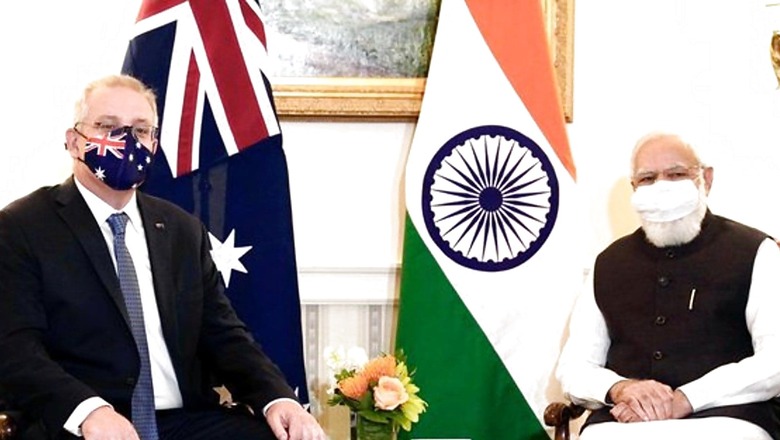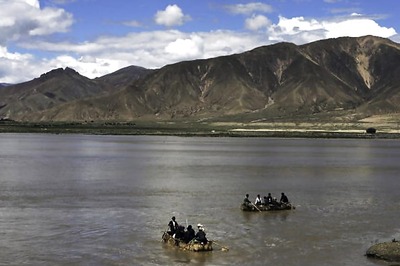
views
There is nothing like trade talks to expose divisions between countries, and the current round of Comprehensive Economic Cooperation Agreement (CECA) talks between India and Australia is revealing some large cracks.
First, Australia is averse to ‘early harvest’ deals and to taking in more Indians. Both have to happen if the CECA deal is to happen. The Australian Department of Foreign Affairs and Trade has a dominant bias towards “nothing is agreed until everything is agreed”—that is, a complete Free Trade Agreement (FTA) or nothing. The question is, against this background, can they effectively negotiate early harvest deals, something they have avoided for decades?
Second, India has reviewed FTAs over decades and views them as beneficial to the other party and not so much to India—like a form of “trade colonialism”. Given Australia’s strong interest in exporting agricultural products and the strength of India’s rural lobby, India can be seen to have much to lose in a deal.
Some deals will emerge from the current round of talks on the Australia-India Comprehensive Economic Cooperation Agreement (CECA), spearheaded by Australian Trade, Tourism and Investment Minister Dan Tehan and Commerce and Industry Minister Piyush Goyal. But these might disappoint many.
ALSO READ | India Must Bridge the Last-mile Gap on FTAs for an Economic Take-off
Not a Reassuring Picture
A look at Indian trade actions and Australia’s stance is not reassuring.
India withdrew from the negotiations for the Regional Comprehensive Economic Partnership (RCEP); it renegotiated a number of its free trade agreements; it terminated most of its bilateral investment agreements; and it has failed to agree to a mini-economic deal with the United States. Not to mention India’s stance at the World Trade Organisation, which has remained unchanged.
At the domestic level, India has imposed prohibitive tariffs in several sectors and introduced a range of incentives to attract reshoring and investment. It has negotiated on five FTAs over the last 11 years and only one has been signed.
How does Australia’s record stack up? Eager to send more resources and agricultural products to India, Australia has been reluctant to allow access to great services and people movement from India. This is a thorny issue. So, my word is ‘caution’—don’t get your hopes up too high—there has been little progress to show after 10 years of negotiations.
Points of Convergence
Should we be optimistic at all now? Yes.
First, Australian professional trade negotiations have loosened up on what was a cornerstone article of faith for them—preferring the ‘single undertaking’ negotiating model—in which nothing is agreed until everything is agreed. Now even they are talking about ‘early harvest’ deals. But can they change their spots? The Scott Morrison government, desperate for a trade win, hopes they can.
Second, India has direct concerns about China and is nervous about the US-China rivalry. It has sensibly decided to build up strategic and economic partnerships as a hedge. There is much talk in India about potentially good trade outcomes arising from China’s ‘trade war’ on Australia.
But the stalemate is always market access.
Australia wants agriculture access—India is hesitant because this sector employs 40 per cent of India’s population.
India has argued that Australia’s short-term business visitor regime constitutes a barrier to India’s services exports. Australia has pushed back on these demands, reflecting concerns at the potential impact on the labour market. In a nutshell—one big stalemate!
True, India is looking eager, having revived trade talks with the European Union, the United Kingdom, the United States and Australia. But is it all just a lot of talk?
Remember, India is primarily after foreign investment, exports, making domestic industries competitive and incentivising other countries to manufacture in India. Can Australia play a role in any of this? The key for Australia and India is to somehow align Australia’s export goals with India’s investment and new exports priorities.
Australia could partner India on technology, innovation and R&D. Australian companies could boost investment into India—and there are good economic and government subsidy reasons to do so.
Australia has one big advantage here—critical ‘rare earth’ minerals. India has high sustainable energy and e-mobility goals and will need these minerals.
Add to that, Australia has growing expertise in the hydrogen industry, while India has a National Hydrogen Mission. There are good R&D opportunities for both.
While India is the “pharmacy of the world”, Australia is a leader in biotech R&D. Biotech in dairy, marine and more could provide trade deal motivation.
China and Pandemic Effect
But finally, there is the big blockage.
India wants to increase skilled migration to Australia. Australia has opposed it. Most of the talks in the last decade have faltered at this point.
What has changed?
Border closures have left Australian businesses struggling to fill roles. Australia needs an ‘early harvest deal’ to attract skilled professionals from India. So, despite the gloom of the past, there are reasons to have some optimism around these talks on CECA.
At the strategic and defence level, India and Australia have never been closer. Australia is taking tentative steps into the multi-polar world after holding fast to one key relationship—the US alliance—for over 70 years.
India, on the other hand, always comfortable with a multi-polar view, is taking new steps closer to the US and edging away from a non-aligned world view. In the Indian way of diplomacy, India also recently held strategic talks with Russia, demonstrating its capacity to build relationships across diversity.
Plus, both Australia and India are part of the Quad or Quadrilateral coalition that resolved to work towards ensuring a free, open and inclusive Indo-Pacific. The other two members of the Quad are the US and Japan.
India is ambitious. The government is negotiating bilateral trade agreements with 20 countries and expects to complete half a dozen deals, including those with Australia and Britain, by this December and March 2022. The Australian Trade Minister, Dan Tehan, last week pointed to Indian FTA priority areas, such as critical minerals, infrastructure, energy, technology, agribusiness, education and space.
On past records, you might conclude that this will all amount to a lot of hot air. But this time despite the differences, the combined effect of the rise of China and the pandemic could result in a positive trade outcome.
The author is blogger at INTO INDIA, Chairman of the Genesis India Australia Horticulture Project and former President Australia India Business Council (Vic). The views expressed in this article are those of the author and do not represent the stand of this publication.
Read all the Latest News , Breaking News and IPL 2022 Live Updates here.



















Comments
0 comment